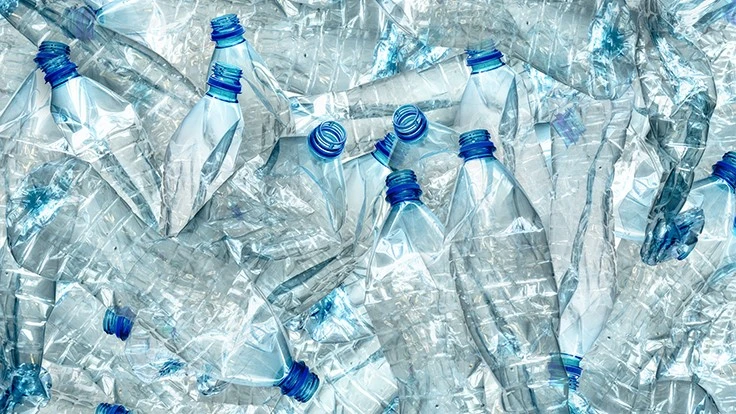
Roman Milert | Adobe Stock
The Council of the Great Lakes Region (CGLR), as part of its Circular Great Lakes initiative, released a five-year circular economy strategy and action plan for plastics. The organization worked in collaboration with corporate stakeholders in the plastics value chain as well as government, academic and nongovernmental organization (NGO) partners to develop the plan. The aim, the council says, is to forge a future without plastic packaging waste and litter in the binational Great Lakes region.
“Plastic is a versatile material that is used widely in our industries and homes as consumers, but it should never become waste in our economy or litter in our environment,” says Mark Fisher, president and CEO of the Council of the Great Lakes Region, which has offices in Ottawa, Ontario and Cleveland. “Through the Circular Great Lakes initiative, we are convening business, government, academic and NGO leaders to drive and deliver the systems change needed to close the loop and accelerate the transition to a circular economy for plastics in this critical region to the United States and Canada.”
According to CGLR, more than 80 percent, or 12.8 million tons, of recyclable plastic packaging materials are being landfilled every year, effectively throwing out $1.7 billion (CA$2.1 billion) worth of reusable plastics.
Operating in tandem with other zero plastic waste measures, a modern and effective recycling system is a key component of closing the loop and eliminating plastic marine debris, CGLR says. The council says many Great Lakes households do not have access to recycling options and that regional recycling rules differ, with policies in many places still favoring a throw-away economy. The council also says recycling system infrastructure is aging and lacks investments in advanced materials management practices.
To tackle these issues, the Circular Great Lakes strategy and action plan centers around three key priorities:
- cleaning up and ending plastic waste and litter from entering the Great Lakes watershed;
- accelerating development of plastic packaging recycling supply chains and markets, with a focus on flexible plastics; and
- achieving a step-change in plastics recycling quantity and quality through policy, consumer behavior and investments in infrastructure and advanced technologies.
For priority one, the Circular Great Lakes initiative will support the study of plastic pollution sources, pathways and impacts, the report says. The initiative also will help eliminate land-based plastic packaging and cigarette litter by expanding the Great Lakes Plastic Cleanup launched by CGLR and Pollution Probe in 2020.
For priority two, the Circular Great Lakes initiative will focus on improving and increasing collection, sorting and processing for end-market uptake, the report says. CGLR will work with partners to optimize the Great Lakes materials management and recovery system in four key opportunity zones for recycling: Pennsylvania-New York-Quebec, Michigan-Ontario-Ohio-Indiana, Illinois-Wisconsin-Minnesota and northern Minnesota-northern Ontario.
According to the report, of the region’s 216 material recovery facilities (MRFs), 42 facilities (20 percent) have the required throughput and space, providing a starting point for retrofit projects. Regarding priority three, CGLR says demonstration projects and expanding adoption at these facilities will provide commercially viable technology-led solutions and the necessary 60 percent increase in processing that will be required to achieve a 50 percent recycling rate for plastics in the region. Currently, the plastics recycling rate within the region is at 18 percent, according to the report, which also lists immediate improvements in plastics traceability, advanced MRF sorting and new reclamation processes as necessary to overcome materials management barriers.
Partnerships in the Circular Great Lakes initiative continue to grow and currently include eight corporate partners (Charter Next Generation, Dow Inc., Imperial, Pregis, Meijer, American Packaging Corp., Dart and Rothmans, Benson & Hedges Inc.) and 30 academic, nonprofit and government knowledge partners such as the National Oceanic and Atmospheric Administration Marine Debris Program.
Latest from Recycling Today
- BMW Group, Encory launch 'direct recycling’ of batteries
- Loom Carbon, RTI International partner to scale textile recycling technology
- Goodwill Industries of West Michigan, American Glass Mosaics partner to divert glass from landfill
- CARI forms federal advocacy partnership
- Monthly packaging papers shipments down in November
- STEEL Act aims to enhance trade enforcement to prevent dumping of steel in the US
- San Francisco schools introduce compostable lunch trays
- Aduro graduates from Shell GameChanger program





